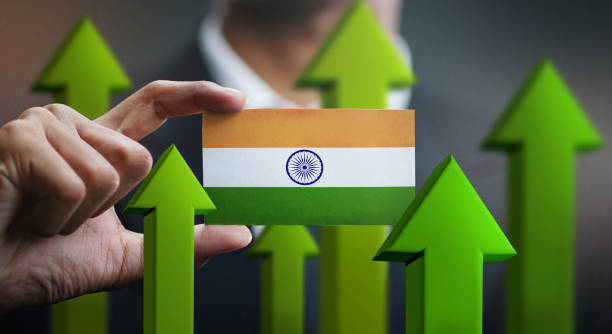India is gaining power in the world order – the idiosyncratic change imply a once-in-a-generation shift and an opportunity for investors
India is on track to become the world’s third largest economy by 2027, surpassing Japan and Germany, and have the third largest stock market by 2030. This forecast is based on the projection that India’s annual nominal gross domestic product growth will average 6.3% through 2030. Thanks to global trends and key investments the country has made in technology and energy.
India is poised to become the factory to the world, as corporate tax lowered, investment incentives and infrastructure spending help drive capital investments in manufacturing. Manufacturing’s share of GDP in India could increase from 15.6% currently to 21% by 2031.
Three megatrends – global offshoring, digitalization and energy transition – are setting the scene for unprecedented economic growth in the country.
The growth story suggests that India’s GDP could be more than double to surpass $7.5 trillion by 2031. Its share of global exports could also double over the period, while the Bombay Stock Exchange could reach a market capitalization of $10 trillion in the coming decade.
Boosting India’s share of global manufacturing, expanding credit availability, creating new businesses, improving quality of life and spurring a boom in consumer spending – will bring about staggering changes in the economic development in India all through the decade.
India began laying the foundation for a more digital economy. India has a great digital network. High percentage of people use smartphones. Digital connectivity is very good and cheapest in world. Even when it comes to 5G, there’s no doubt that India will be the cheapest 5G market. IndiaStack has broad applications, including a network for lowering credit costs, making loans more accessible and affordable for both consumers and businesses.
India’s overall consumption could more than double as income distribution in the country shifts. Indian consumers are also likely to have more disposable income. India’s income distribution could flip over the next decade, and consequently overall consumption in the country could more than double from $2 trillion in 2022 to $4.9 trillion by the end of the decade.
Energy is also key to economic development, as it impacts education, productivity, communication, commerce and quality of life. An estimated two-thirds of India’s new energy consumption will be supplied renewables like biogas and ethanol, hydrogen, wind, solar and hydroelectric power. It also creates new demand for electric solutions, such as electric vehicles, bikes, and green hydrogen-powered trucks and buses.
The rise in India’s energy consumption alongside the energy transition opens up a new segment to boost investment. This rise in capital investments will help to unleash a virtuous cycle of investment, with more jobs and income, more savings and in turn more investment.
Undoubtedly, India offers the most compelling growth opportunities in Asia in the time to come. In the coming decade, as India’s economy transforms, it will be increasingly relevant for global investors in a similar way that China is today. India’s next decade could resemble China’s path from 2007 through 2012.








